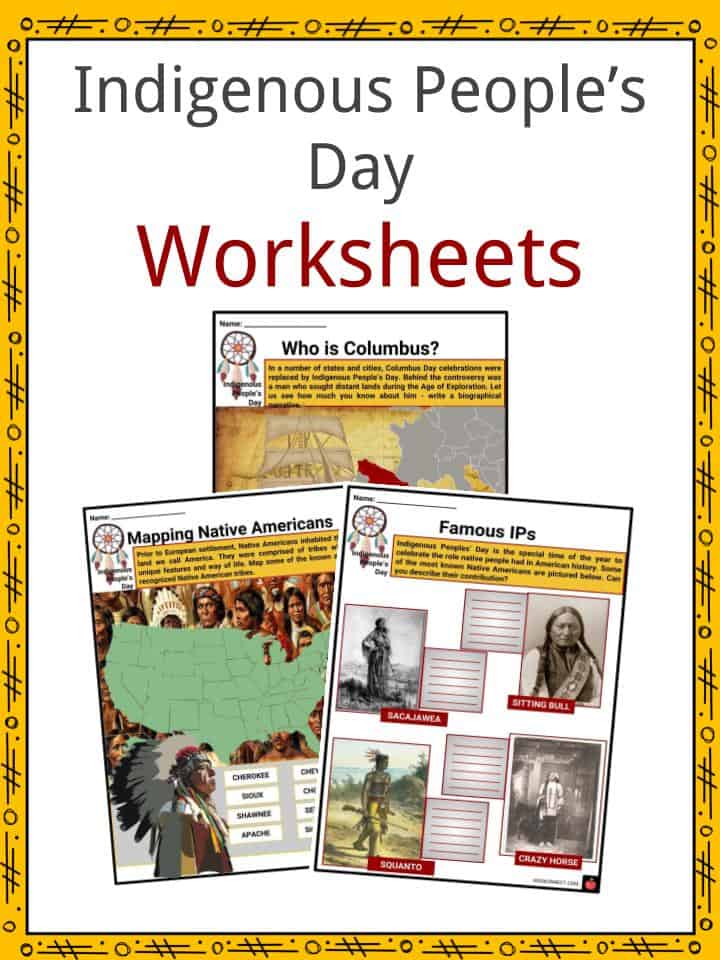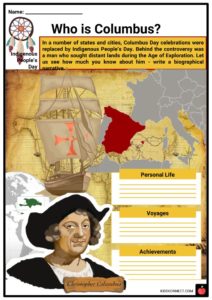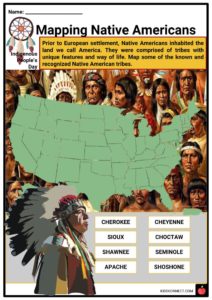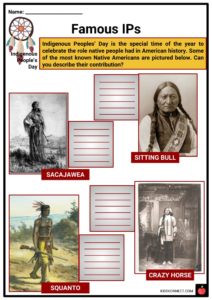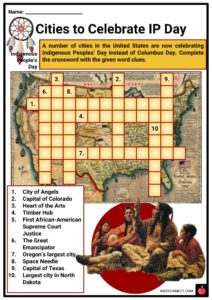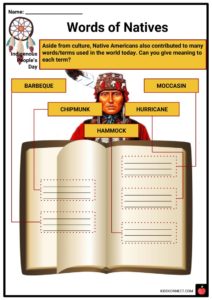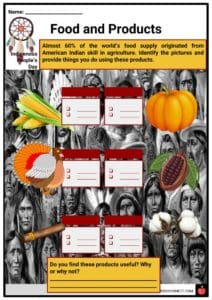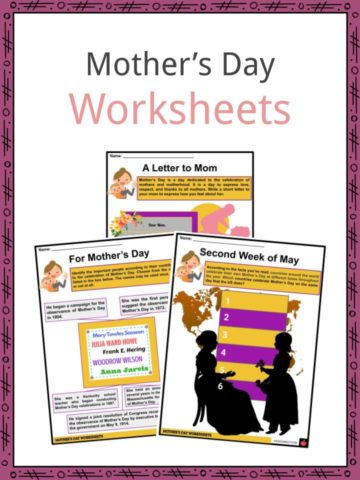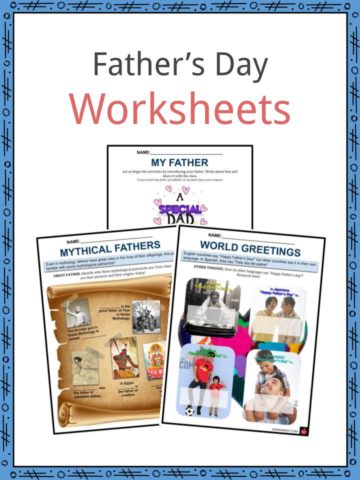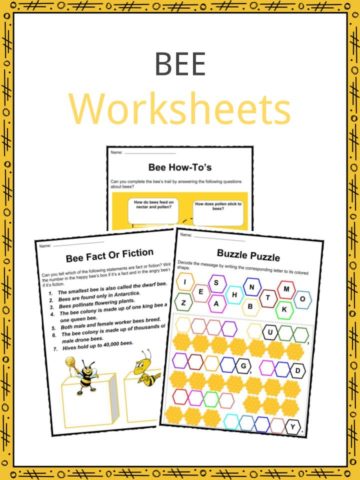Download This Sample
This sample is exclusively for KidsKonnect members!
To download this worksheet, click the button below to signup for free (it only takes a minute) and you'll be brought right back to this page to start the download!
Sign Me Up
Table of Contents
Indigenous People’s Day is an annual celebration in parts of the United States to honor the contributions of Native Americans to America’s culture. It is celebrated on the second Monday in October. It has been a counter-celebration of Columbus Day since 1991. In South Dakota, the celebration is named as Native Americans’ Day.
See the fact file below for more information on the Indigenous People’s Day or alternatively, you can download our 22-page Indigenous People’s Day worksheet pack to utilise within the classroom or home environment.
Key Facts & Information
FROM COLUMBUS DAY TO INDIGENOUS PEOPLE’S DAY
- In 1937, U.S President Franklin Delano Roosevelt proclaimed Columbus Day a federal holiday. Catholic Italian Americans wanted to recognize the role of Christopher Columbus, a Genoan explorer who was known for discovering the Caribbean and conquering the natives in the name of the Spanish Crown. They specifically wanted Columbus to be included in American history.
- Columbus Day commemorates the arrival of Christopher Columbus in Hispaniola in 1492.
- According to Leo Killsback, a citizen of the Northern Cheyenne Nation and Assistant Professor of American Indian Studies at Arizona State University, ‘one of the biggest misconceptions about Columbus is that he was righteous.’ Moreover, he emphasized that Columbus did not actually land where the United States in geographically located today.
- Among the major controversies surrounding the celebration of Columbus Day was the accounts on how the native population of Hispaniola were treated by Columbus and his crew during the colonization.
- Friar Bartolome de Las Casas, a Spanish colonist and scholar specifically described how brutal the Spaniards were to the native men, women, and children in Hispaniola settlements.
- The Arawak population were treated as slaves, dead bodies were sold as dog food, some were burned alive, women were held as sex slaves and used as currency, and most were forced into slave labor.
- Some historians argue that the voyages of Columbus set the stage for institutionalized slave trade in the Americas.
- As a result, much of the Taino population was wiped out for generations.
BIRTH OF INDIGENOUS PEOPLE’S DAY
- The idea of having Indigenous People’s Day in the United States was first conceived in 1977 during the United Nations International Conference Against Indigenous Populations in the Americas held in Geneva, Switzerland.
- In 1989, the South Dakota legislature passed a law proclaiming 1990 as the Year of Reconciliation, which later gave way to replacing Columbus Day with native Americans’ Day.
- In 1992, exactly 500 years Christopher Columbus’ expedition to Hispaniola, native groups agreed to celebrate native culture as a counter-celebration to Columbus Day.
- The Indians of America have never abandoned our constant struggle against the conditions of oppression, discrimination, and exploitation, which were imposed upon us as a result of the European invasion of our ancestral territories.
- Our struggle is not a mere conjunctural reflection of the memory of 500 years of oppression, which the invaders, in complicity with the “democratic” governments of our countries, want to turn into events of jubilation and celebration. Our Indian People, Nations, and Nationalities are basing our struggle on our identity, which shall lead us to true liberation. We are responding aggressively, and commit ourselves to reject this “celebration.”
Excerpt from the Declaration of Quito - In the same year, Los Angeles declared the entire year as Year of the Indigenous People and forewent Columbus Day.
- Aside from Indigenous People’s Day, Leif Erikson Day is a contender to replace Columbus Day. Many scholars argue that Leif Erikson, a Viking was the first European to set foot in the Americas five centuries before Columbus.
- Despite the number of states celebrating this day, Indigenous People’s Day is not a public holiday for everyone, meaning all businesses and federal offices are open. Only California and South Dakota celebrate this day as a non-working holiday.
- In South Dakota, the second Monday in October is Native Americans’ Day. Children are taught and given resources about the traditions, culture, and background of native Americans.
- In Berkeley, California, this is the day for pow wows or the gathering of indigenous people of North America. Pow wows include native dancing, singing, and socializing.
- In 1998, Native American Day became an annual statewide observance celebrated on the fourth Friday in September.
- The states that celebrate Indigenous People’s day instead of Columbus Day include South Dakota, Vermont, Minnesota, and Alaska.
- The cities of Berkeley, Los Angeles, Austin, Denver, Overlin, Bangor, Seattle, Phoenix, and Portland are known for observing the day for Native Americans. Moreover, a number of cities and universities in Michigan, New York, Washington, and California are also shifting to celebrate Indigenous People’s Day replacing the explorer’s day.
- Meanwhile, U.S President Donald Trump reaffirmed the celebration of Columbus via Twitter on October 10, 2017.
INDIGENOUS PEOPLE IN NORTH AMERICA
- Native Americans are the indigenous people of the United States, having inhabited the territory many years before the pre-Columbian period. They are also called American Indians. Over 500 Native American Indian tribes are federally recognized, except those in Hawaii.
- The term ‘Indian’ was coined by Christopher Columbus after believing that he reached the Indies on his voyage.
- Due to the diseases brought by European settlers to the Americas, millions of natives were killed, which resulted in an enormous decline in population.
Indigenous People’s Day Worksheets
This is a fantastic bundle which includes everything you need to know about Indigenous People’s Day across 22 in-depth pages. These are ready-to-use Indigenous People’s Day worksheets that are perfect for teaching students about the Indigenous People’s Day which is an annual celebration in parts of the United States to honor the contributions of Native Americans to America’s culture. It is celebrated on the second Monday in October. It has been a counter-celebration of Columbus Day since 1991. In South Dakota, the celebration is named as Native Americans’ Day.
Complete List Of Included Worksheets
- Indigenous Peoples’ Day
- Who is Columbus?
- Mapping Native Americans
- Famous IPs
- Cities to Celebrate IP Day
- Words of Natives
- Food and Products
- Indian States
- Pilgrims and Thanksgiving
- Let’s Celebrate!
- Native Americans View
Frequently Asked Questions
When was Indigenous People’s Day created?
The movement was first proposed at a United Nations conference in 1977 to address prejudice against Native Americans. South Dakota became the first state to replace Columbus Day with Indigenous People’s Day in 1989, and it officially recognized it the following year.
Why should we protect indigenous people?
With nearly one-fourth of the world’s land territory under their control, indigenous peoples play a crucial role in preserving global biodiversity. They possess unique ancestral knowledge and skillsets related to climate change adaptation, mitigation, and disaster risk reduction.
How do we celebrate indigenous culture?
Attending the Indigenous People’s’ Day celebration is a chance to learn and support indigenous rights and sovereignty by taking action.
Link/cite this page
If you reference any of the content on this page on your own website, please use the code below to cite this page as the original source.
Link will appear as Indigenous People’s Day Facts & Worksheets: https://kidskonnect.com - KidsKonnect, September 27, 2023
Use With Any Curriculum
These worksheets have been specifically designed for use with any international curriculum. You can use these worksheets as-is, or edit them using Google Slides to make them more specific to your own student ability levels and curriculum standards.
